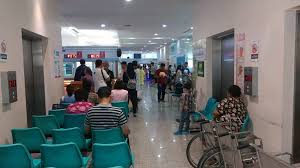
The healthcare system in Thailand is often used as an example of how to implement universal health coverage, especially for low- and middle-income countries. While it’s not a perfect system, it has had great success in lowering mortality rates in infants and children and raising life expectancy. Their healthcare system is usually ranked among the best in the world. For decades, Thailand had implemented reforms and eventually had 4 different health schemes that only covered around 70% of the population. They also heavily invested in healthcare infrastructure. Then in 2002, they combined some of the schemes and created a universal healthcare system.
Universal healthcare in Thailand is provided by 3 programs. There is the Civil Servant Medical Benefit Scheme (CSMBS) which was started in the 1980s. It provides health benefits to civil servants and their families and most of its providers are public hospitals and clinics. In the 1990s, the Social Security Scheme (SSS) was introduced and it provides primary health coverage to employees in the formal sector through a mix of public and private providers. In 2002, the Universal Health Scheme (UHS) was started to give affordable healthcare to the uninsured poorer population. It was initially referred to as the 30 Baht Project in reference to its low copayment cost. Private healthcare is still popular with those who can afford but due to the success of the healthcare reforms around only 10% have it.
Thailand began investing in its health infrastructure in the 1970s and has since set up a system that pairs well with its universal health coverage. The district system is the backbone of the healthcare system in Thailand. A district health center serves around 3,000-5,000 people and a district hospital around 30,000-50,000. Health centers a usually staffed by 3-5 nurses and paramedics. A district hospital has a much larger staff of a few general practitioners, 30 nurses, a couple of pharmacists and dentists, and 20 paramedics and support staff. Health centers provide primary healthcare and basic health services and a district hospital provides second-level care. Specialists are available at the larger district hospitals. Provincial hospitals provide tertiary care and receive referrals from district hospitals for clinical specialties. Private hospitals are mostly available in the larger cities but it is a growing sector.

The healthcare schemes are primarily funded through taxes. It places the biggest cost burden on the people that are most able to afford it. As a result, the biggest beneficiaries of the scheme have been those with the lowest income, in particular women. The SSS is the only scheme that is funded by contributions from the insured. Since the start of universal coverage in Thailand, catastrophic health spending, out-of-pocket payments and medical impoverishment have all significantly decreased. The UHS has reduced the number of health impoverished households by around 37%. However, due to rising healthcare costs there are concerns about whether the current system is sustainable.
Thailand is a very popular spot for medical tourism. It typically reduces the cost and wait times for the patient to travel to Thailand for medical procedures. Medical tourism also benefits the providing country, it provides funds to the Thai healthcare system and local hospitals. Private hospitals usually set up charitable foundations to give the underprivileged access to the world class facilities that medical tourism has allowed. Some of the popular procedures people travel to Thailand for are cosmetic, transplants and orthopedic. Thailand is also world renowned for gender reassignment surgery. Every year over 1 million people travel to Thailand for medical procedures and that number is quickly rising.
Universal health coverage in Thailand is highly praised. It has done its best to lower the disparity in healthcare between urban and rural populations. The correlation between poverty and infant death has disappeared. Also, by 2011 98% of the population had access to healthcare. The government also created programs to provide skilled health workers to rural areas. It also outperforms its neighbors in stats in infant, child and maternal mortality rates. However, there are still some inequities in healthcare between rural and urban facilities. Despite all the reforms there are still concerns. Private hospital contributions to the health system are declining and healthcare costs are rising. There’s also an increasing health worker shortage. Even with some growing concerns, Thailand’s healthcare system is one to look toward, especially for other low- and middle-income countries.
